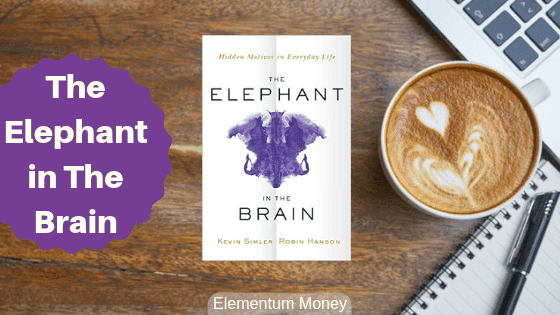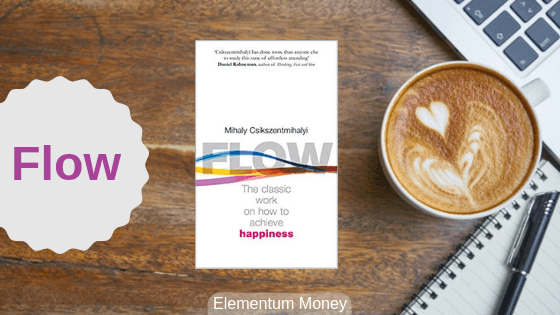For some time now, I have been fascinated with how our brain works. That is probably what led me first to pick up a fabulous book called “Behave” by Robert Sapolsky. It’s one book I can’t claim to completely comprehend but that still doesn’t take anything away from how fascinating a read it has been so far. When I had to read a book to write about, my brain followed a similar trend to pick “The Elephant in the Brain” by Kevin Simler and Robin Hanson. While the Sapolsky book is at a different level altogether, for anyone interested in an easier read into the working of the brain, this book is a good starting point.
What does The Elephant in The Brain mean?
Most of you would be well versed with the phrase “The Elephant in the Room” which essentially implies that there is an obviously uncomfortable situation which people are happy to brush under the carpet rather than talk about. With the metaphor of “The Elephant in The Brain”, the authors are trying to show how there are motives in the actions we take, which the brain would rather sweep away than acknowledge.
As the sub title aptly points out, the book is dedicated to discussing the “hidden motives in everyday life”. A large initial part of the book covers the evolutionary process and the reasons for the brain to deceive itself since a lot of us end up being unaware of the real reasons behind our own actions. In the second part, the book is neatly divided into different areas of life like body language, laughter, politics, education, medicine, etc. For each area, the book uncovers the different behaviors and the real intent behind those. For me, the book was a mixed bag with varied reactions to the different theories put forth from yawning at the same old information to fascinated enlightenment and in part also to a snort of disbelief.
For this post, I will keep it short focusing on the three areas where I found the book to be pretty enriching. But first, some bit of the base concept that underlies a lot of the insights around the areas of life picked.
3 Areas of Competition
Everything we humans do is to fight away competition in one of the three main areas of life – sex, social status and political status. In some ways, it’s a manifestation of the well-known Darwinian philosophy of “Survival of the Fittest” in these three areas.
Sex is probably the most obvious one. We know enough and more about the competition for sexual mates and how many of our actions are defined by it.
As for social status, the authors talk about it in terms of prestige or reputation in society. It often defines how you would be treated by others. I liked how they re-framed it to write “it’s your “price” on the market for friendship and association”. Like any economic market, higher the demand for your friendship and association, more the price. Of course, all of this is in kind since money is not the only thing that makes the world go round.
Don’t discount political status here. You do not have to be in the field of politics to be competing in this sense. Here, politics simply talks about group dynamics within humans. So, competition in any group, be it a school, a corporate organization or even a religious body comprises of competing for political status. In some ways, this definition made it clear why we often talk about “office politics” or sometimes even the struggle for seemingly small badges like School Prefect (ok, that might have been just me).
As defined by the authors, most of our actions are fuelled by competition in increasing our status or attractiveness in these three areas.
Body Language
Body language is simply another term for non-verbal communication. When you are in the presence of someone, and if you still believe only in the verbal communication being exchanged, then you are pretty naïve. Body language is a far more fascinating area to observe the other person. Body language could range anywhere from the nose scratching while lieing or the widened eyes of disbelief or even the creeping blush of embarrassment.
The fun part? Most of us are not even aware of the signals and cues we end up sending out. While some of the body language is done consciously, some of it is displayed in an unconscious, unaware manner. Which is where the authors come in to understand why the brain deceives us while sending out those signals and cues.
Interestingly, the authors call body language a much truer version of communication. As they rightly point out, in the three main areas of life – sex, social and political, there are a lot of norms that govern our behavior. While we might verbally choose to honor those norms, body language is the ambiguous link that connects our motives and inner desires to the actions that behavior we end up displaying. Body language helps us skirt as well as follow norms, depending on the situation, for inner motives that we ourselves might not be consciously aware of.
Laughter
This was hands down the most fascinating and enlightening part of the book for me. Before this, I had never considered how laughter is such a unique and universal yet voluntary process in us humans. I was literally walking around with a Eureka bulb switched on in my head once I read this.
Sample this excerpt from the book:
Laughter is an involuntary behavior. It’s not something we actively decide to do; our brains simply do it, naturally and spontaneously. In this way, laughter is similar to other involuntary behaviors like breathing, blinking, flinching, hiccuping, shivering, and vomiting. But whereas these are merely physiological, laughter is an involuntary social behavior.
The Elephant in the Brain – Kevin Simler & Robin Hanson
The author starts off with three interesting theories in the past about why we laugh, simultaneously squashing them as to why the theories don’t really explain it well enough. The authors cite a study by neurobiology professor Robert Provine to make two points about laughter – it is a social process and it is active communication observed by the fact that in a conversation speakers laugh about 50{76b947d7ef5b3424fa3b69da76ad2c33c34408872c6cc7893e56cc055d3cd886} more than listeners. Not only do we laugh far more when in company, but it also ends up communicating in a number of ways that lack the subtlety of body language.
So, why do we laugh? The authors point out to 3 interesting angles.
Laughter in a way sets the mood of the conversation or the setting. If the mood is somber, the same conversation or expression on the face could be quite grim. On the other hand, often enough, laughter ends up releasing built-up tension in a room, signaling that what happened was play or that you can afford to be light-hearted. The authors make another interesting distinction here about laughter coming from the speaker or the listener. When the speaker laughs, it gives a clue on the intent or the context of the conversation. When the listener laughs, it signals the message being received and the perception that he or she is getting from the conversation.
Another reason why we laugh is the thrill or humor of skirting the boundary of norms. We laugh when someone audibly farts in public, when Jerry beats Tom time and again and especially at all those spouse jokes which we find oh-so-relatable. However, the problem occurs when there is disagreement on which norm can be skirted and made a source of amusement vis-à-vis which one to take seriously. As the Charlie Hebdo controversy showed us, a lot of norms are not universal and it helps to tread cautiously.
The third angle to laughter was another interesting one. The authors talk about how we find physical humor concerning pain so funny, depending on the magnitude of pain and the psychological distance. More the psychological distance, funnier it is to us. So, if an unrelatable stranger slips on a banana peel, it’s funny to us. But, if a loved one gets a hip fracture from slipping, the laughter goes out of the window.
I can’t just end this favourite section of mine from the book without a wonderful quote taken from it:
In risu veritas (In laughter, there is truth)
James Joyce
Conversation
One of my favorite statements to make these days is “It doesn’t take much to get me to start talking”. Not surprisingly, enough people seem to buy it! But, why do we talk and spend so much of our time and energy, apparently 20{76b947d7ef5b3424fa3b69da76ad2c33c34408872c6cc7893e56cc055d3cd886} of our waking lives, in this pursuit of sharing information?
The authors point out the fact that talking and sharing information through conversation has two vital costs – one, the speaker is no longer the only person with the monopoly over that information and two, good quality information often requires efforts to be acquired. In light of this, how is it still that talking is the far more common aspect of conversation with listening being a rarer skill?
From the research of Geoffrey Miller and Jean-Louis Dessalles, the authors conclude that speaking is really an act of showing off, almost like the peacock’s feathers. In some ways, every conversation is an evaluation by the listener on your being a potential ally in one of the three areas of life mentioned earlier – sex, social and political. And the best part is that every time you talk about something, you only get to build upon it and use it as a potential weapon in your arsenal to impress people. So, yeah job interviews are not the only time what you are saying is being evaluated.
Every remark made by a speaker contains two messages for the listener: text and subtext. The text says, “Here’s a new piece of information,” while the subtext says, “By the way, I’m the kind of person who knows such things.”
The Elephant in the Brain – Kevin Simler & Robin Hanson
For instance, when you are talking to a friend, you want to stay relevant and show how much you know and what you know, so that the person remains a friend. I am not talking encyclopedic knowledge here. Even humor in some ways becomes one of the potential ways people use in conversation to attract people in all spheres. I remember a friend in MBA who would try and make jokes at every instance and wasn’t that much of a listener. But, he was well rewarded by being popular in class.
Generally, I like reading and writing about books that give an action point that I can apply in my life. But, in this case, I realized that sometimes just knowing about things can make you view the world and everyday life in a very different manner. Sometimes, knowing why you do what you do can end up informing your actions and behaviors in unforeseen and even unconscious ways.
As usual, this post is meant only to whet your appetite and get a glimpse of the wealth of enlightenment this book has. Have you read the book? What did you make out of it? Let me know in the comments below.





Leave a Reply